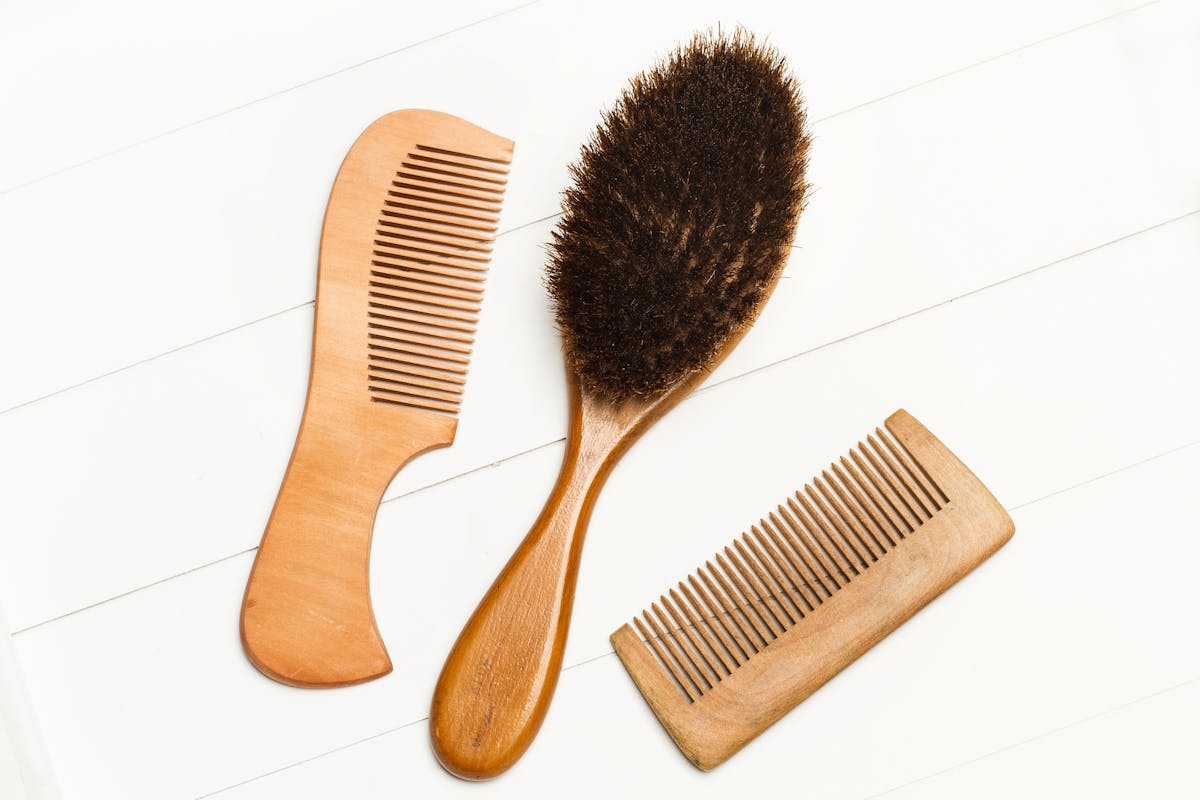When it comes to hair damage, you know the usual causes: harmful ingredients, heat tools, overstyling. But there’s another culprit that could be wreaking havoc on your hair: your hairbrush.
The Best Brushes & Combs For Healthy Hair
Hair Health
6 Min Read

Get hair, health, and science news delivered right to your inbox.

Medically Reviewed by
DR. MELISSA ANZELONE, N NDAll combs and brushes are not created equal. If you use a comb or hairbrush with sharp, jagged edges or rough plastic bristles, you run the risk of damaging the cuticle, causing tangles, getting microtears on the scalp, or even ripping out strands of your hair.
Worried you’ve been using the wrong brush or comb? Keep reading to learn which comb and hairbrush types are deemed “hair-friendly” by the experts at Nutrafol.
What kind of hairbrush is best for healthy hair?
For people with fine hair, brushes with boar bristles are your best bet. The filament, or bristles, come from wild boar — but make sure it’s labeled “100% boar bristle” or “pure boar bristle” to ensure you’re purchasing the real deal. Soft and flexible, boar bristles safely slide right through hair without pulling or snagging, and they’re excellent for distributing your natural oils to help condition the hair naturally. Boar bristles can even help stimulate blood flow to the hair follicles, which can help improve hair growth.
If you have coarser or curlier hair, consider picking up a hairbrush with mixed, widely-spaced bristles. A blend of boar and nylon bristles help keep hair smooth, not frizzy, without a lot of tension. A mixed bristle brush is also great if you’re looking to add volume to your hair. Find one with a ceramic core to help achieve the volume and shine you want. Since a ceramic center helps dry hair quickly and more efficiently, you’ll spend less time using heat tools like your hair dryer, which is better for your hair health.
Speaking of heat tools, steer clear of metal brushes. The metal can get extremely hot and cause possible damage to thin or fragile hair if you use heat for styling. Also avoid brushes with beaded ends. Hair can easily tangle around the plastic, pulling the hair from the scalp.
What kind of comb is best for healthy hair?
If you’re in the market for a new comb, search for a comb with rounded teeth. Unlike combs with sharp, pointed edges, combs with rounded teeth are less likely to fray, snag, or tear your hair. You want the comb to be flexible enough to slide through your hair without breaking or pulling delicate strands. A wide-tooth is key for detangling without harshly yanking on your roots. If you have an abundance of gorgeous, dense curls or are rocking an Afro, consider using a pick or comb that’s infused with natural oils to help glide through your thicker hair texture.
The best way to brush or comb your hair
Finding quality brushes and combs is important, but to maintain healthy hair, you also need to use them properly. To keep your hair breakage-free, gentle brushing and combing is a must. If your movements are too vigorous, you could end up removing protective layers of your hair’s outer cuticle, making your hair more susceptible to damage. Make sure to brush hair in sections, starting from the bottom — don’t brush down the entire length of your hair in one swipe. Brushing hair from top to bottom can cause knots and unnecessary damage.
After putting all that time and energy into finding the perfect brush and comb, the last thing you want to do is put your hair at risk by using them incorrectly.